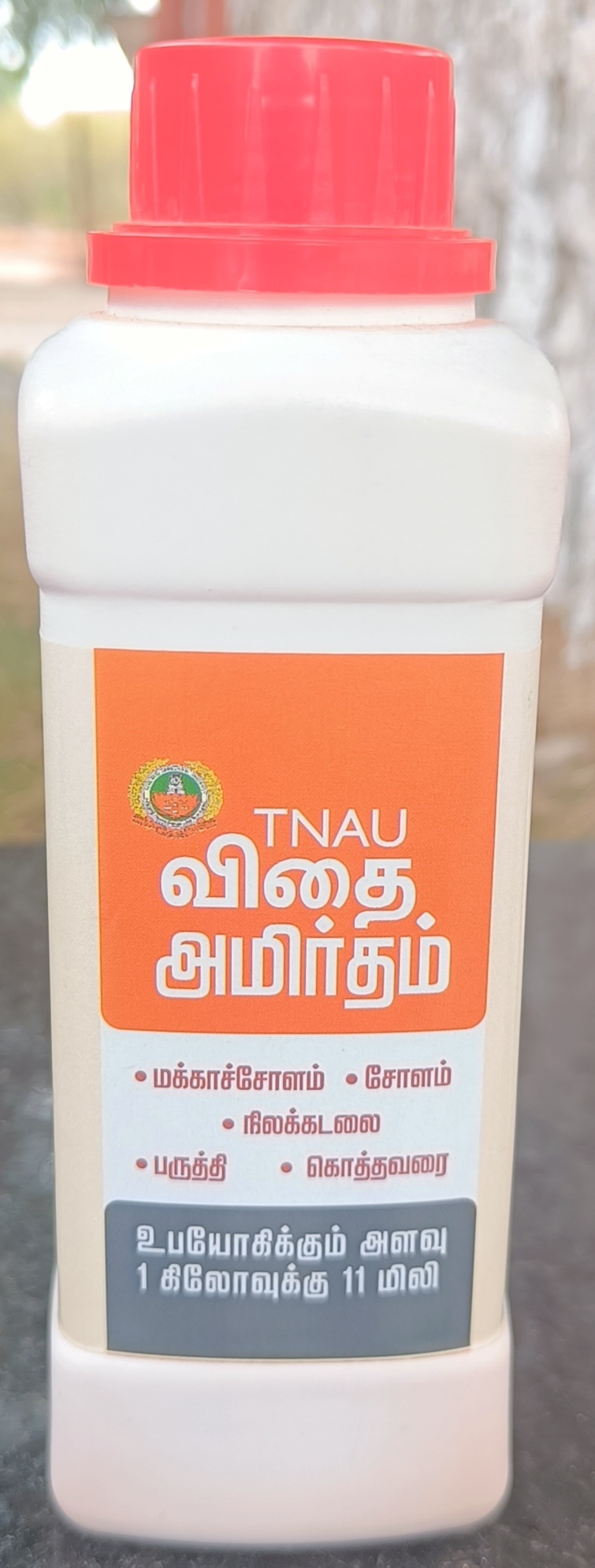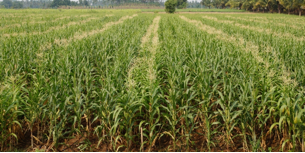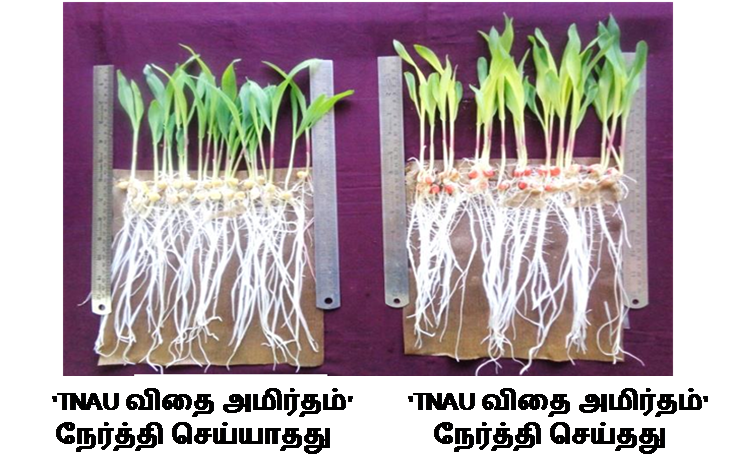| Maize hybrid Seed production techniques
Land Requirement
- Land should be free from volunteer plants. The previous crop should not be other varieties of the same crop. It can be the same variety if it is certified as per the procedures of certification agency.
Field Standards
A. General Requirements
Isolation
-
Space isolation: Maintain a distance of at least 400 meters between the seed crop and any other maize field that has a different variety planted.
- Time isolation: Sow the seed crop a month earlier or later than neighboring maize fields.
B. Specific requirements
Factor |
Maximum permitted (%)* |
Off-type plants that have shed or are shedding pollen in male parent at any one inspection during flowering when 5.0% or more of the plants in the seed field have receptive silks |
0.50
1.00
2.0
0.50 |
Tassels of the plants that have shed or shedding pollen in seed parent at any one inspection during flowering when 5.0% or more of the plants in the seed parent have receptive silks |
Total of pollen shedding tassels including tassels that have shed pollens for all three inspections conducted during flowering on different dates |
Off-types plants in seed parent at final inspection |
Seeds and sowing
Seed rate
- Female parental line: 15 kg/ha;
- Male parental line: 10 kg/ha
- Female and male block ratio : 8:2
|
Pre-sowing seed management
- Soak the seeds in 2% KH2PO4 in the seed to solution ratio of 1:1 for 8 h.
- Coat the seeds with TNAU Vidhai Amirtham @ 11 ml / kg of seeds.
   Uncoated seed Coated seed TNAU Vidhai Amirtham Uncoated seed Coated seed TNAU Vidhai Amirtham Season
- June - July and November - December.
Spacing
Planting ratio
- Sow the female and male parents in the ratio of 4:1 or 4:2..
Border rows
- Sow four rows of male parent all around the field for effective pollination and prevention of contamination by foreign pollen. .
Fertilizer requirement
- The crop requires NPK @ 250:75:75 kg/ha. Apply NPK kg/ha.
- Apply quarter of the dose of N; full dose of P2O and K2O basally before sowing.
- Place half of the dose of N on the 25th day of sowing and remaining quarter of N on the 45th day of sowing.
Rogueing
- Based on the distinct and diagnostic characters of inbred lines given during release of hybrids, remove off-type plants, diseased, late and weak plants. Rogue off-type plants that deviate from the given inbred with respect to root and stalk development, plant type, pigmentation, leaf and stem pubescence, tassel and ear traits, and seed colour..
Detasselling
- Detasselling is the removal of tassel from female parent. Detasselling is done when the tassels emerged out of the boot leaf, but before the anthers have shed pollen. Anthers take 2-4 days to dehisce after complete emergence. Only in few cases, the anthers start to dehisce before its complete emergence. In such cases, detasselling should be done earlier. Detasselling is done every day from the emergence of tassel and continued for next 14 days..
Precautions to be adopted during detasselling
- No part should be left on the plant as it may cause genetic contamination.
- Do not break the top leaves as it may reduce the earning of source material required to accumulate in sink [seed].
- Detasselling should be done only after the entire tassel has emerged but before anther dehiscence and immature.
- Mark the male rows with marker to avoid errors in detasselling process.
- Look out for shedders [shedding tassel] in female rows as they may also cause contamination.
- After pulling out the tassel, drop it there itself and bury in soil. Otherwise late emerging pollen from detasselled tassel may cause genetic contamination.
- Do not carry the tassel through the field as shedding pollen may lead to genetic contamination.
|
 Hybrid seed production in maize (planting ratio 4:2)
Hybrid seed production in maize (planting ratio 4:2)Detasselling
- The crop attains physiological maturity 30-35 days after 50% flowering and the seed moisture at this stage will be around 25-30%. The crop is harvested when the sheath of cob dries and attains straw yellow color. The crop is harvested as once over harvest for seed purpose.
Cob sorting
- This is an important operation in maize to maintain genetic purity. The dehusked cobs are sorted out for trueness to type based on kernel colour, shank colour and arrangement of seeds in the cob. The diseased ears and odd ones should be removed to maintain genetic purity.
Threshing
- Seeds are threshed using maize sheller at a seed moisture content of 13-14% after obtaining approval from the Certification Agency. The ideal seed moisture for shelling is between 11 and 14%. If the moisture is below 11%, mechanical shelling will cause damage. If the moisture content is above 15%, the seed will be bruised and chipped.
Drying
- Dry the seeds to 12% moisture content for further processing and storage.
Field inspection
- In hybrid seed production plot, inspections shall be made during the following stages as given below,
STAGES OF CROP INSPECTION
1. During pre-flowering/vegetative stage
- Purpose: Verify the rogueing and removal of off type plants
2. During flowering stage
- Purpose: To check disease and pest infestation and variable tassel/ ear husk traits
3. At pre harvest stage
- Purpose: To assess the estimated yield from the plot
4. Post Harvesting
a. Cob inspection
- After harvesting, the cobs are dried to the requisite moisture 12%. Cob inspection is
done to remove infected, dissimilar and ill filled cobs
b. Seed inspection
- To check the genetic purity and quantity assessment of seed lot.
Seed Standards
- A. Seed ears inspected after harvest shall not contain in excess of 0.50% of offtype ears including ears with off-coloured kernels.
Factors |
Standards for each class of seed |
Pure seed (minimum) |
98.0% |
Inert matter (maximum) |
2.0% |
Other crop seeds (maximum) |
10/kg |
Other distinguishable varieties based on kernel colour and texture (maximum) (maximum) |
10/kg |
Weed seeds (maximum) |
None |
Germination (minimum) |
90% |
Moisture (maximum) |
12.0% |
For vapour-proof containers (maximum) |
8.0% |
Source
The Professor and Head,
Department of Seed Science & Technology,
TNAU, Coimbatore-641003.
Phone:0422-6611363
Email: seed@tnau.ac.in
Image source
http://www.cicr.org.in/pdf/hybrid_seed_production.pdf |





